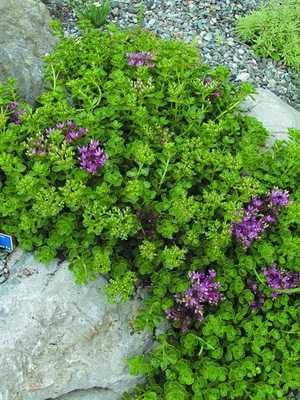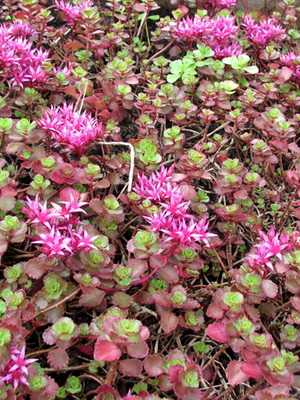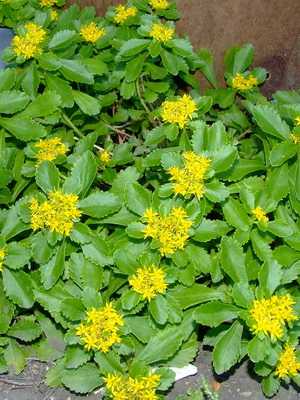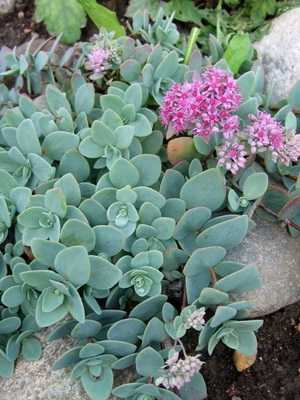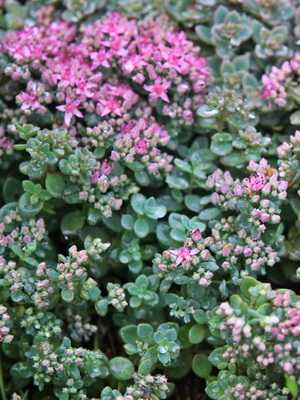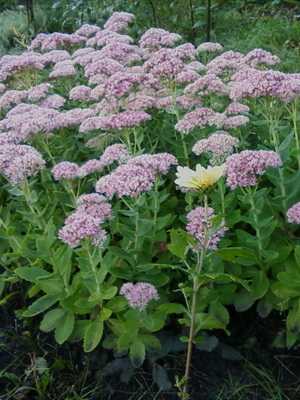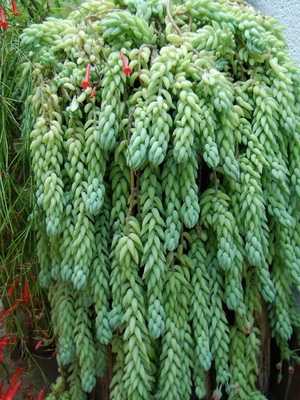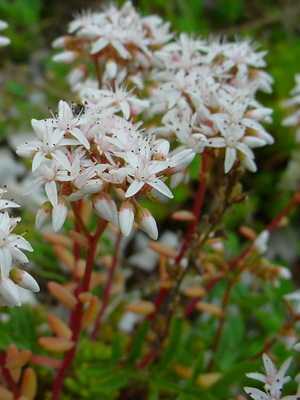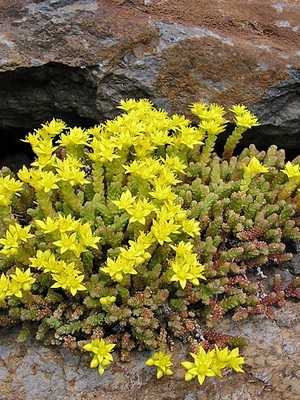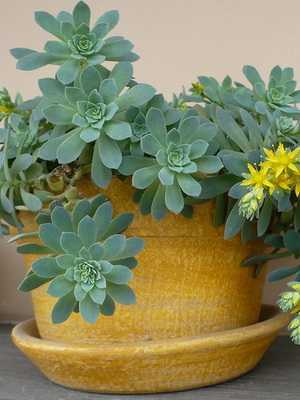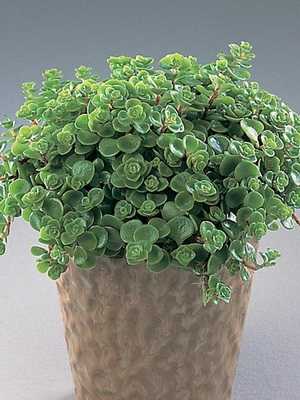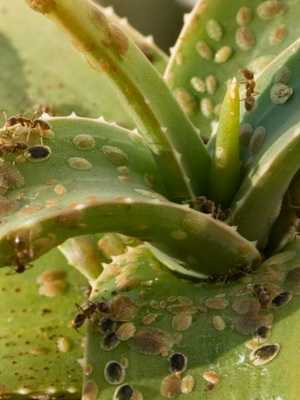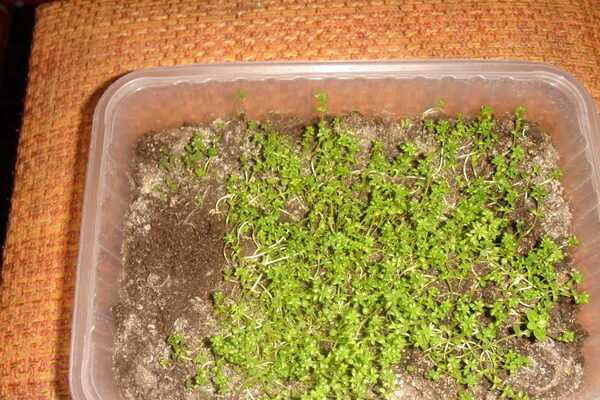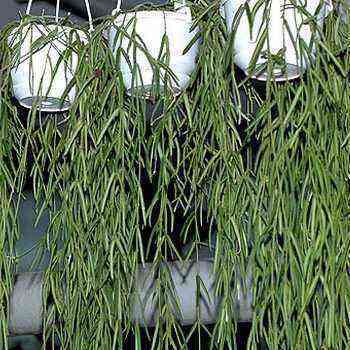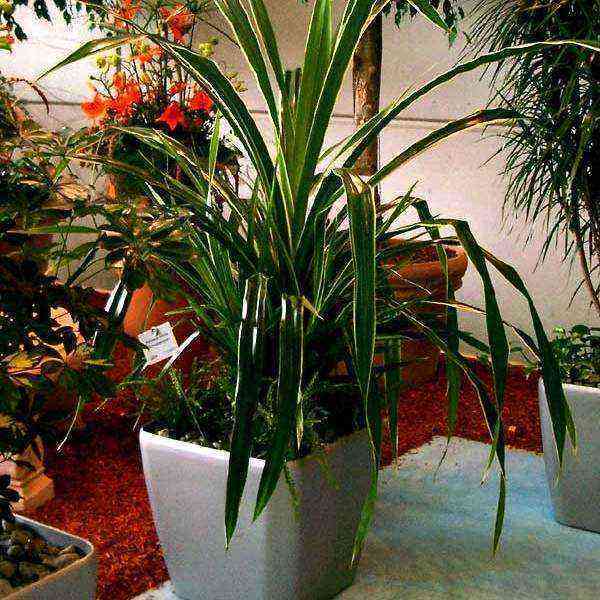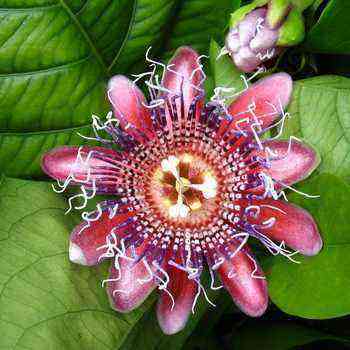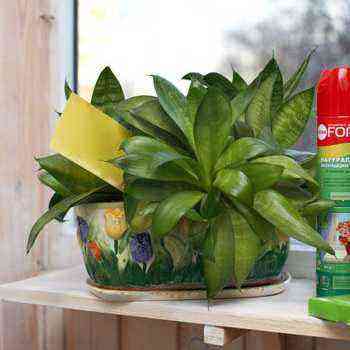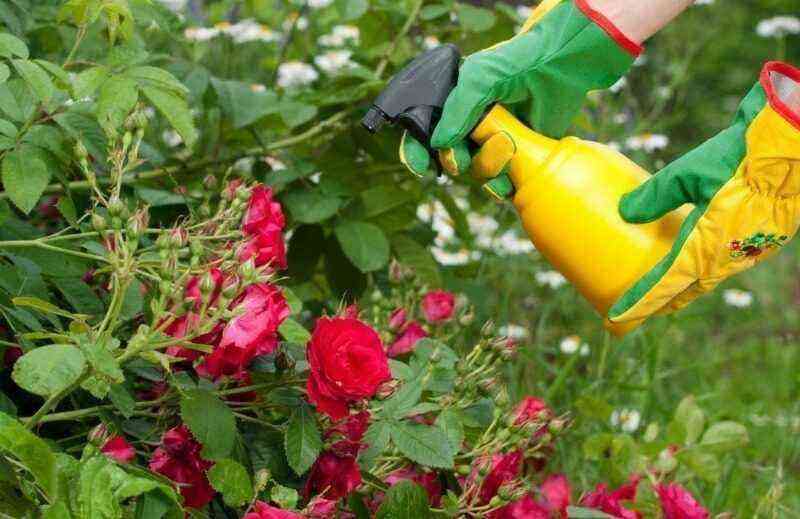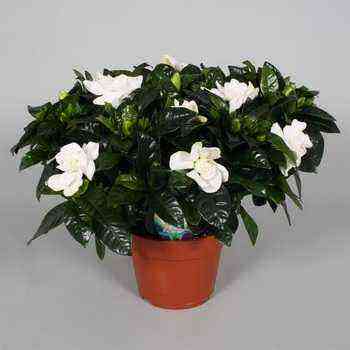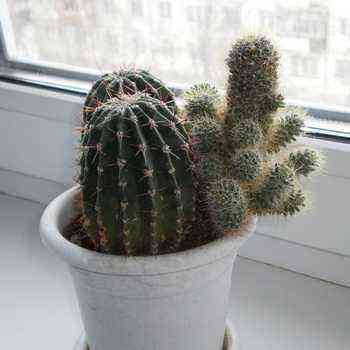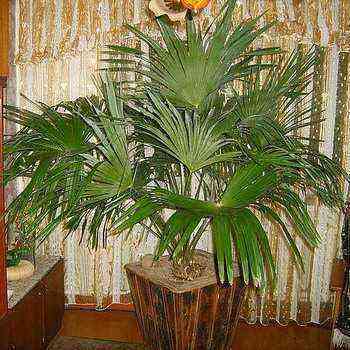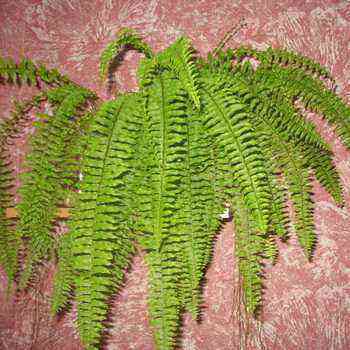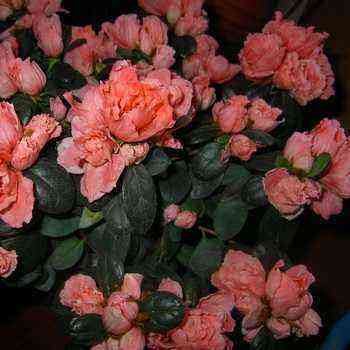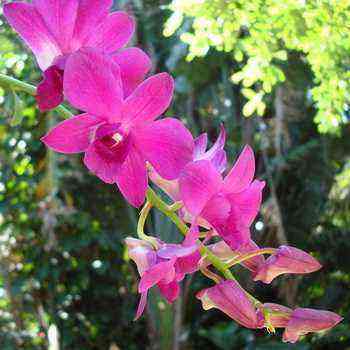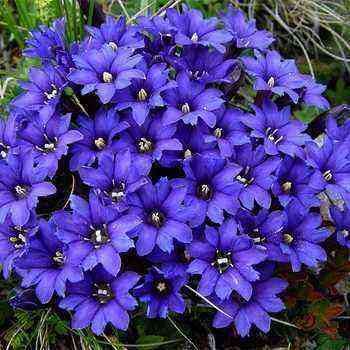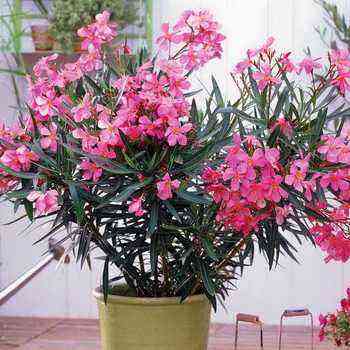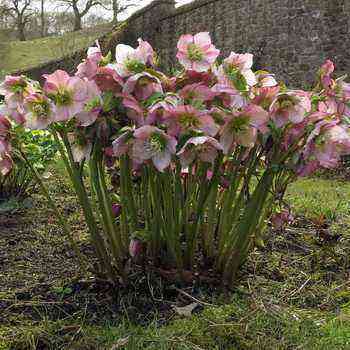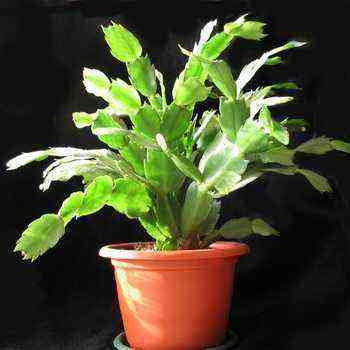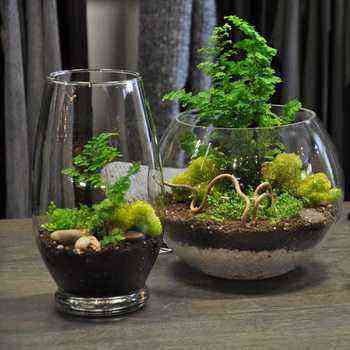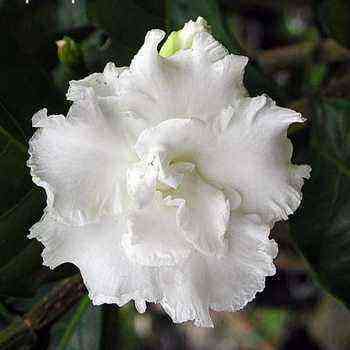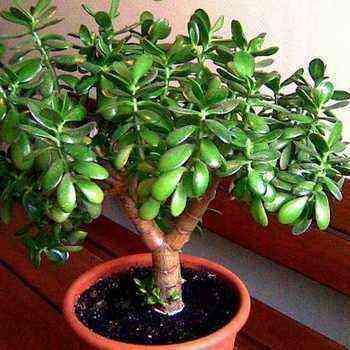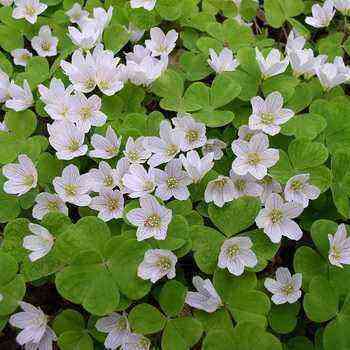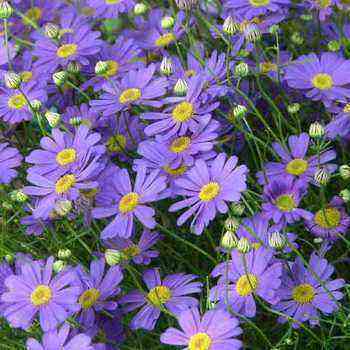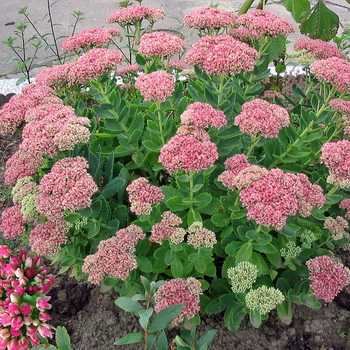
Sedum, sedum (Sedum) belongs to the Fatty family. Naturally grows in North America, Europe and East Asia.
These are perennial, rarely one-, two-year-old herbaceous, rhizomatous plants with semi-woody erect or creeping stems.
The genus Sedum is the most extensive (about 600 species) in the Crassulaceae family. Its representatives are distributed mainly in the temperate and cold zones of the Northern Hemisphere, mainly in Europe, the Mediterranean, Siberia and Central Asia, as well as in China and Japan.
A large number of sedum species are concentrated in the arid regions of Mexico and the southern states of the United States. Several of them, including stonecrop (Rhodiola) pink (Rhodiolarosea), or golden root (Sedumrosea), are very widespread and grow even on Novaya Zemlya, in Greenland, in Alaska.
Stonecrop or sedum plant (sedum): description and photo at the time of flowering
Succulent stonecrops are annual and perennial herbaceous plants. Stems up to 20 cm long. Leaves are round or cylindrical, with a bluish, sometimes reddish tint. The flowers of stonecrops are small, white, pale pink, red, depending on the species, collected in an umbellate inflorescence. Sepals, petals and carpels are loose or loosely fused at the base. Sepals are of unequal length in many species. There are 2 times more stamens than petals. Many species are very decorative.
Some types of sedums look good in hanging baskets, pots. Blooms profusely throughout the year. There are types of stonecrops that form curtains.
Cleansing (sedum) It is readily used by flower growers as a background ground cover plant. Different types of stonecrops go well with each other. The sedum is compatible with hosts, mountain pine, juniper, daylily, purple-leaved black cohosh, petunia, cornflower, platycodon, alissum, sanvitalia.
The sedum plant looks especially good in the composition of flower arrangements, when drawing up rocky hills. The undoubted advantage of this succulent is that it is easy to breed and easy to care for. These plants quickly captivate children, so they are often used when landscaping kindergartens and schools.
In sunny, dry, sandy or stony elevated places, a small plant grows, only 5-10 centimeters in height. Round, light green, narrowed at the base, leaves cover the stem. If you cut a juicy, fleshy leaf, then slimy juice is pulled out of it by threads. This plant belongs to the fatty family. Plants belonging to this family – hare cabbage, young tenacious – have fleshy, thick leaves too. The scientific name of the family – Crassulaceae – from the word “crassus” – “fat”, “thick”.
A miniature, graceful plant blooms in June – August with yellow stars, collected in an inflorescence. The golden star of the flower consists of 5 sharp petals, a five-part cup, 5 pistils and 10 stamens.
These photos show sedum during flowering:
This plant is called sedum acre, or Sedum acre, from the words: “sedere” – “sit” and “acre” – “sharp”, “bitter”. The first name was given to the plant for its short growth, the second – for the acrid taste of the leaves. The sedum is very tenacious. Dried up and squeezed between the leaves of the herbarium, it remains alive for several years (unless you first kill it in boiling water) and, once in natural conditions, it can grow again.
Sedum is a perennial plant: some of its shoots live for 2 years. The first year only leaves are formed on them, in the second year the shoots bloom. The sedum stores water in the leaves and evaporates very little.
Look at the photo – the leaves of the stonecrop plant are covered with a thick skin that has a small number of stomata:
The stalk pressed to the ground is not blown by the wind.
When writing sedum, it is worth noting that this plant can withstand both the scorching rays of the sun and the absence of water in the soil. But in the fall, star-shaped fruits open only in rainy weather. Small sedum seeds are washed out by the rain and carried away by streams of water. Water carries seeds into cracks between stones or, seeping through the sand, leaves them on the surface.
The sedum is a melliferous plant, but animals do not eat its juicy leaves: their juice is bitter, like pepper.
Sedum is an ancient folk medicinal plant that was forgotten for a long time, but now it has again aroused the interest of scientists. In 1939, a crystalline substance “sedamin” was isolated from stonecrop, which stimulates respiration, bowel movement and contributes to muscle contraction.
Sedum deserves a special description as a medicinal plant, for medicinal purposes it has a variety of uses. Fresh leaves are used as a laxative, and in larger quantities – as an emetic. A decoction of flowers was previously used for “epilepsy” (epilepsy) and as an antiscorbutic drug. With the juice of the leaves, calluses were removed, abscesses and skin diseases were treated. Stonecrop root is part of the ointment and tinctures against scrofula. Stonecrop juice is also used when washing clothes, instead of soap, when cleaning and washing kitchen utensils and bottles.
The most valuable thing about stonecrop is its antimalarial properties. The sedum can replace the cinchona tree.
Stonecrop is collected during flowering, without roots, and dried. One and a half grams of dry stonecrop, brewed like tea, is enough to stop an attack of malaria within three days. This medicine should be consumed in certain doses as directed by the doctor, since stonecrop has different properties in different quantities.
Common sedum (hare cabbage) and other varieties
In this section of the article, you can familiarize yourself with the photos, names and descriptions of the types of stonecrops most common in plant growing.
Common sedum, or hare cabbage. It is found in many regions of the European part of Russia, Western and Eastern Siberia, and the Far East. It grows on sandy soils, in pine forests, among bushes, in river floodplains, in meadows and forest glades.
Sedum hare cabbage is a perennial herb up to 60 cm high. The roots are tuberous, spherical-thickened. Stems single or several, light green, often curved at the base. The leaves are opposite, oval, fleshy with a bluish bloom. Flowers pink or pale yellow, collected in dense corymbose or loose paniculate inflorescences. Blooms in July – October. The seeds ripen in September – October.
There are several subspecies in nature, varieties have been bred that differ in the color of flowers (greenish or yellowish white), stems (green, red, purple and others), leaves (green, gray-green, bluish-green, reddish and others).

Scum of Morgan (S. togganianum)… Most suitable for indoor conditions.
Domestic sedum is a succulent plant that belongs to the jungle family. In the wild, it grows in Mexico.
As you can see in the photo, this room sedum has long shoots of light green color, which reach a length of about 50 cm:
Its stems are densely covered with fleshy subulate leaves that grow downward, which allows it to be used as an ampelous plant for the southern window. Numerous leaves are rounded, slightly elongated, similar to waxy. They are located on the stem in a spiral, forming a kind of weaving. This type of stonecrop has a bluish color, which gives a gray waxy bloom on the leaves. Morgan sedum blooms with small pinkish flowers that form an umbrella inflorescence.

Cleanser white (Sedum Album L.)… It got its name for its fragrant white flowers.
Many popular names are associated with the use in folk medicine – God’s color, living grass, soap dish, six-week. Grows on stony soils, rocky slopes, in the mid-mountain zone. Found in the European part of Russia, in the Caucasus.
A perennial, evergreen, bare herbaceous plant, forming in a vegetative state low mats up to 20 cm high. The bases of the stems spread along the ground and are equipped with thin adventitious roots. Vegetative branches are short, with crowded thick oval or elliptical small blunt leaves up to 1 cm long.
Pay attention to the photo – in sedum (sedum) of this species, the flowering shoots are straight, vertical, slightly reddening with thick leaves up to 1,5 cm long, thicker in the middle part of the peduncle:
The flowers are white, collected in small-flowered umbrellas with curls, forming a paniculate inflorescence. Blossoms in June-July; bears fruit in August-September.
Varieties and forms differ in height (from 1 cm to 20 cm) and leaf color (green, red, orange-red, pink, and others).
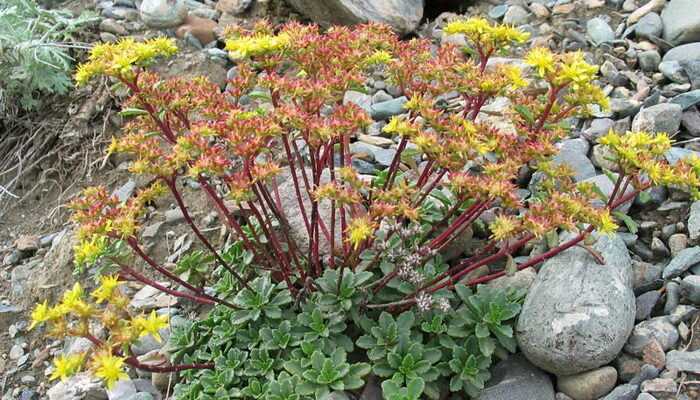
Sedum hybrid (Sedum Hybridum L.). Grows on stony slopes, rocks, on sandy, pebble coastal edges, mountain steppes. Found in the Urals, southern Western Siberia, Eastern Siberia.
Perennial herb forming low rugs 8-15 cm high. Rhizomes are horizontal, slightly lignified, cord-like, located shallow underground. Stems are numerous, branching, ascending, 10–30 cm tall, green, of which a few are flowering, the rest are vegetative. The leaves are alternate, green, flat, spatulate, wedge-shaped at the base, obtuse above, coarsely toothed. The inflorescence is apical umbellate, consisting of several curls. The flowers are yellow. Blooms in July-August; bears fruit in August-September.
What other types of sedum (sedum) are there: photos and names
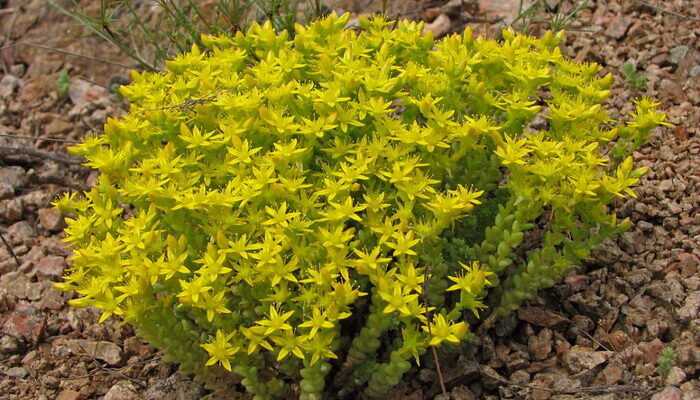
Cleanser (Sedum Acre L.)… Stonecrop juice can cause ulcers on the skin, for which it got its name.
For the benefit of almost all skin diseases, pain relief and relief from cancer, with caution regarding its caustic, bitter healing juice, residents of many regions of Russia called it many affectionate and sometimes mysterious names: wild pepper, fever grass, pimple, blush, guillemot, vigorous and others.
It grows on dry sandy, stony, poorly soddy soils, rocks, open hillsides, on coastal sands, dry meadows, in light forests. Found in the European part of Russia, in the Caucasus, in Western Siberia.
A perennial evergreen herb up to 10 cm high, forming ground cover sod up to 20 cm in diameter. Stems are branched, rounded. Leaves are fleshy, dark green, arranged in regular order, glabrous, oblong, up to 0,6 cm long.
Look at the photo – this type of sedum has golden yellow flowers, up to 1,5 cm in diameter, collected in semi-umbellate inflorescences:
The fruit is a box with small seeds. Blooms profusely in early June – July. The fruits ripen in August – September.
Garden forms with yellow foliage, smaller in size are known.
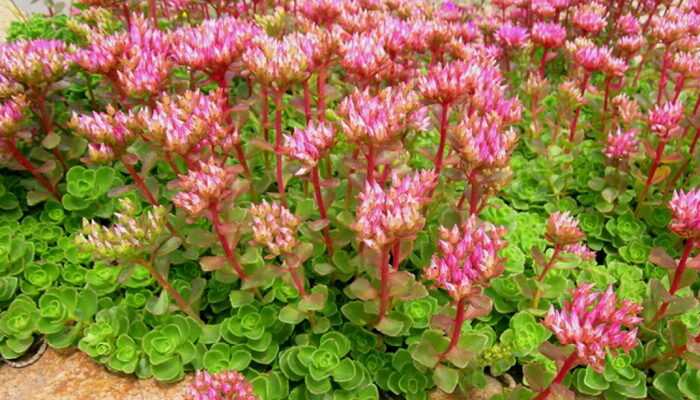
Sedum false (Sedum Spurium Bieb.)… Grows on stony and gravelly slopes, subalpine meadows in the upper and middle mountain belts. Found in the Caucasus.
Perennial herbaceous evergreen plant with creeping, long rhizomes. Stems creeping or ascending, sterile, shorter than flowering ones, 3–6 cm long, with more crowded leaves; flowering stems up to 20 cm long, finely fluffy or rough, with traces of fallen leaves. Leaves are fleshy, dark green, opposite, ovate-wedge-shaped, fine-pubescent, ciliate along the edge. The flowers are pink or purple, forming a corymbose, dense inflorescence. Fruits are straight, reddish, oblong-ovate leaflets. Blooms in July-August; bears fruit in August-October.
Many varieties have been bred with various colors of flowers (white, bright pink, purple and others) and leaves (green, brown-purple, bronze, dark red, variegated, and others).
Succulent plants are no less popular:
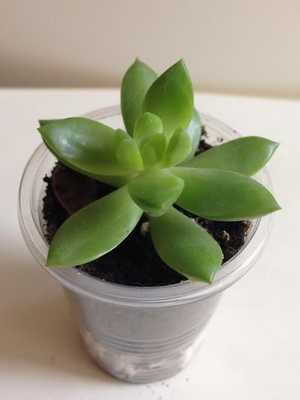
Adolf’s sedum (S. adolphii)
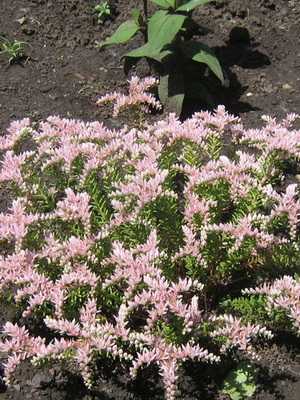
The sedum is beautiful (S. bellum)

Siebolt’s sedum (5.sieboldii)
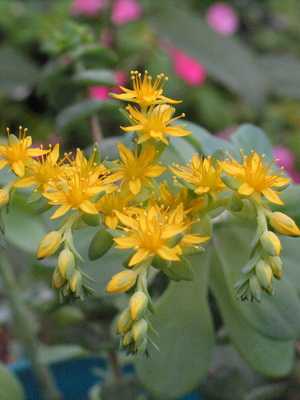
Palmer’s sedum (S. palmeri)

Sedum of Trelis (S. treleasei)
Siebold sedum (Sedum Sieboldii Sweet.). The Tolstyankov family. From Japan. Perennial leafy succulent. Its thickened roots give numerous hanging stems 15-20 cm long. Leaves sit opposite, attached around the stem by whorls – 3 leaves together, almost round, with a bluish tint and reddish edges, whorls are located at an equal distance along the stem. The flowers are small, pale pink, collected in umbellate inflorescences. Appears in August-September, abundant flowering. In late autumn, the plant loses its stems, the rest period begins until February. In February, it awakens again and repeats the same development cycle as in previous years.
The sedum is propagated by cuttings and by dividing the rhizome. Cuttings root easily and quickly, they are planted in small (12 cm) pots of 15-20 pieces. You need leafy, turfy land and sand (2: 2: 1). Separated rhizomes after 2-2,5 months give a lot of hanging stems that cover the walls of the pot. The location is sunny, watering is moderate. In winter, during the rest period, they are kept in a cool room without watering.
Sedum, or Siebold’s sedum, is a well-known, but rarely widespread deciduous ornamental plant. In culture, it is used as ampelous – in hanging vases, baskets, on stands, etc.
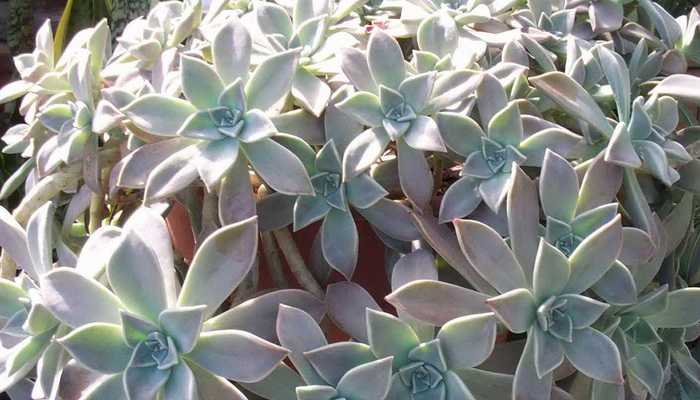
Weinberg sedum (Sedum Weinbergii Rose.)… Family Crassulacea. Homeland – Mexico.
An evergreen succulent plant with a thick stem. Flat, ovate-lanceolate leaves are rarely located along the stem, at the ends they are collected in a loose rosette and end with a short blunt tip. Their color is light gray with a lilac tint and bluish bloom. It does not bloom in our conditions. It stands out among other sedums for its decorative effect. It multiplies easily. Suitable for amples.
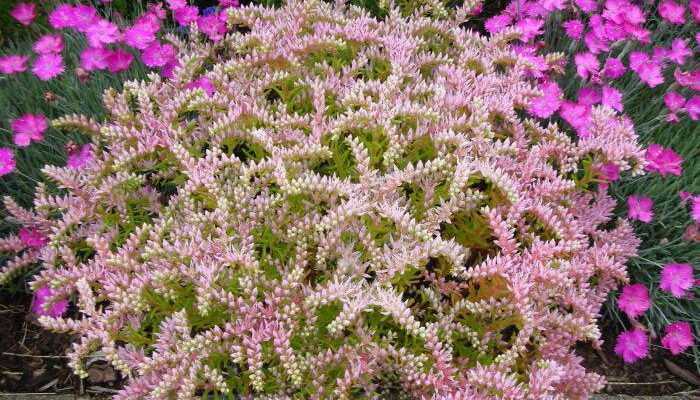
The sedum is beautiful. Small plants about 7,5-15 cm tall with leaves folded like buds.
Over time, they bend back and become spatulate. Small, star-shaped flowers form in spring.
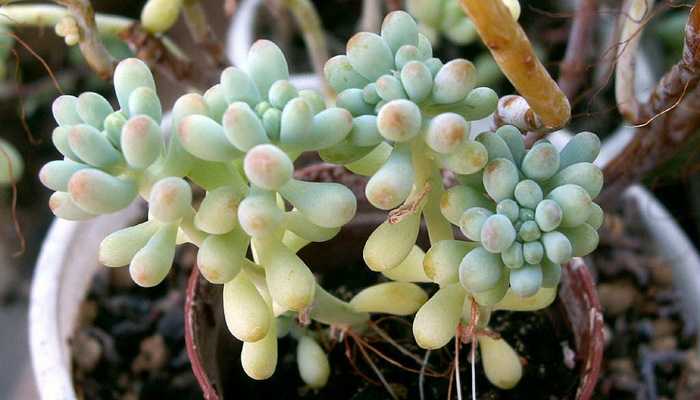
The sedum is thick-leaved. Erect plant with blue-green cylindrical leaves 2,5 cm long, slightly turned upward, with red tips. Yellow flowers may appear in spring.

The sedum is red-colored. Similar to the previous species, but most of the leaf is colored red, especially in strong sunlight.
Growing and caring for indoor sedum (with photo)
Accommodation. Heat-loving species are grown in the rooms. The sedum plant requires intense sunlight and good ventilation. On the site they are planted in open sunny places, since it is extremely photophilous and tolerates only slight shading; the color of the leaves of many species in the sun is brighter and more juicy, some even acquire a characteristic blush or tan. In conditions of insufficient light, cultivation is difficult, since the sedum ceases to bloom and is strongly stretched, losing its appearance so that it is impossible to recognize it. Sedum should be placed so that the foliage of trees does not fall asleep in autumn.
Temperature. In summer and spring, the air temperature when growing sedum should not be lower than 17-19 ° C. In winter, during the dormant period, stonecrop must be kept in a cool room with an air temperature of about 10 ° C. In summer, the plant can be kept on the balcony.
The sedum is well tolerated by dry room air.
Substrate. The sedum is unpretentious to soils. Any sandy, loose and nutritious soil mixture is suitable for cultivation, preferably with the addition of brick chips and pieces of charcoal. When caring for home sedum, you can use a mixture of leaf and turf soil with sand (2: 1: 1) or a ready-made specialized soil mixture for succulents.
Creeping species are grown on well-drained, any cultivated soil – ordinary, medium-weight, loam, since they are very unpretentious. Mineral fertilizers should not be applied. When caring at home, stonecrop responds well to fertilizing, especially nitrogen fertilizers or manure, carried out in early spring. The dish should be wide.
In care, the stonecrop flower, like any of the representatives of succulent plants, is unpretentious, and does not require much trouble.
Care consists in regular (once every 1–3 years) dividing or redrawing to maintain even carpets, removing old shoots and adding fresh substrate. Long, bare stems of sedum, such as stonecrop, can be sprinkled with leaf humus at the beginning or at the end of the season. Frequent and very careful weeding is necessary, since sedums are completely uncompetitive with respect to weeds.
Watering. When caring for sedum at home, moderate watering is required in summer, and limited in winter. It does not tolerate excessively moist soil, so in spring and summer it is enough to water it twice a week. In winter, watering should be reduced or stopped altogether. Periodically, you need to remove dust from the leaves by wiping them with a damp cloth.
Lighting. With a lack of light, the plant stretches strongly, its leaves fall off, and it loses its attractiveness.
Fertilizer. During the growing period (April – August), the plant should be fed with full mineral fertilizer.
Transfer. If necessary in the spring. Usually, young stonecrops are transplanted once every 1 years, then after 2-3 years. Frequent transplanting when growing sedum is not necessary, the plants tolerate tightness well. It is necessary to transplant stonecrops (especially about. Morgana) very carefully – the plants are easily damaged. Pots for planting and transplanting are shallow, but wide, since the root system is underdeveloped. Good drainage is essential.
The sedum is an original decoration of a modern interior.
A well-developed, healthy plant forms a cascade of leaves from the leaves, resembling a large bunch of grapes.
Pests and diseases. With improper care of stonecrop (sedum), stagnant moisture often leads to root rot. The main pests of the plant are scale insects and whiteflies.
For many stonecrops, during insufficient care during cultivation, leaf fall during slight mechanical stress is characteristic. This property, developed in an arid climate, is used for vegetative propagation.
If the stem of an indoor flower stonecrop is bare, then it can be rejuvenated by cutting off the top of the stem or rosette and rooting it.
How to grow sedum from seeds and cuttings
The plant can be propagated by stem cuttings, layering, seeds, as well as mature leaves. With seed propagation, the first shoots appear in 10-15 days, the cuttings take root in 15-20 days.
It must be said that the leaves of stonecrop are rather fragile and, breaking off from the stem, quickly take root.
When stonecrop propagates, the rhizomes are separated after 2 months and give a lot of hanging stems that cover the walls of the pot.
Sowing seeds is carried out in spring or autumn in bowls or boxes, which are covered with foil. Seedlings are very small. When 1-2 true leaves appear, they dive into pots. Young plants bloom in the 2-3rd year.
Many flower growers do not deepen the seeds, put them superficially in spring or before winter, in bowls or boxes, which are dug into the garden bed or put in a greenhouse. Seedlings are very small. When 1-2 true leaves appear, they dive into boxes or beds. Young plants bloom for 2-3 years. Four – five-year-old bushes are divided in late summer or spring into divisions with 2-3 buds, a piece of rhizome and roots.
The fastest, easiest and most reliable way of propagation is by cuttings. It is especially often used for propagation of creeping stonecrops, since their shoots form air roots, which, in contact with the soil, quickly take root. Everything, even the smallest pieces of shoots that fell on the garden bed during dividing and transplanting, can take root.
In the spring, at home, stonecrop houseplants are propagated by leaf cuttings. They are preliminarily dried for several days and planted in clean sand washed with water. Stem cuttings should be immediately planted in pots with medium-heavy, water- and air-permeable soil.
In stonecrop, during the flowering phase, cut stem cuttings 10–15 cm long are cut and rooted in wet sand. After 20-30 days, they take root.

